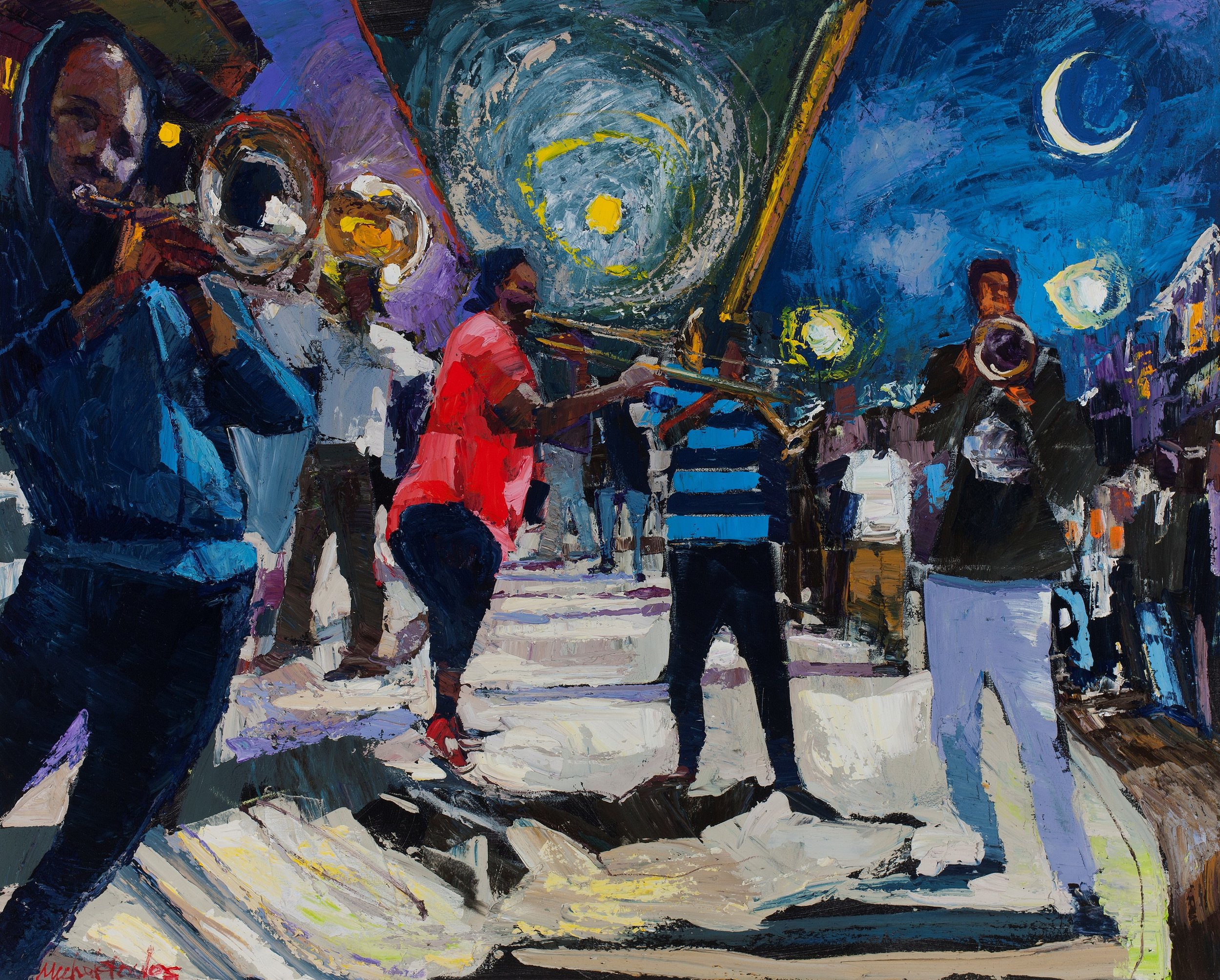Bongo Congress by James Michalopoulos
Join us for an Artist Talk with painter and sculptor, James Michalopoulos exploring From the Fat Man to Mahalia, a retrospective featuring over fifty works. Musical curator David Kunian and his team have put together a stunning array of artifacts from the museum archives to accompany the exhibition – from Aaron Neville’s iconic jacket to Dr. John’s piano. The exhibition spans Michalopoulos’ recent paintings of street musicians to rarely-seen works borrowed from private collections across the United States–including the original painting of Louis Armstrong for the Jazz Fest poster, which hasn’t been on view to the public in over 20 years.
Directly following the Artist Talk, Michalopoulos will be signing copies of his newly-released monograph, Bookalopoulos: The Culture of Celebration. Assembling over five hundred works, Bookalopoulos weaves together the narrative of Michalopoulos’ life with paint. It is the story of a forty-year relationship with the city of New Orleans, and a wild affair with the French landscape. It is an exploration of the human psyche. It shows the artist as a master colorist and an accomplished knife painter. This book attempts to reveal James Michalopoulos as an artist open to the world, possessed by the muse, and with a will toward transcendence.
“James Michalopoulos’ paintings of New Orleans’ musical legends show his understanding of their style as well as their psyche. This insight extends to his portraits of the nameless musicians on the street or in the corners of the music clubs of the city. The exuberance of music-making is what this exhibit is all about,” David Kunian, exhibition curator.
“James is the region’s most recognized living artist, and brings a unique perspective that is quintessentially New Orleans. The exhibition explores connections between the visual arts and music and illuminates the vibrant music scene in the lower French Quarter,” said Greg Lambousy, Director of the New Orleans Jazz Museum. “The show overlaps with Jazz Fest, allowing visitors to see the iconic paintings that were the source of numerous beloved Jazz Fest posters throughout the years.”
